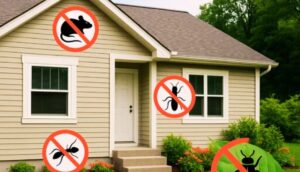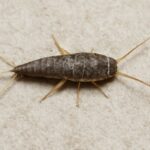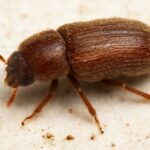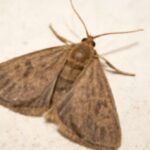How to Prevent Roof Rats or Get Rid of Them

A common household problem that many homeowners face is having to deal with rodents, one of the major rodents that tops the list is rats. These critters are always on the go and will stop at nothing, causing havoc in their pursuit of food and water sources, shelter, and a place to raise their young. The presence of rats is a cause for concern because rats are not only carriers of disease, but their destructive behavior can cause much damage, including hazards by chewing on wires that cause shortages that may lead to fires.
One such rodent that can become a major issue is roof rats, as the name implies, roof rats’ preference or habitat consists of nesting in the upper parts of homes and building structures, for example, attics and rafters. They may also be found in heavy shrubbery, cypress, yucca, honeysuckle, and palm trees, and even under or around structures, such for example sheltering in wood piles or debris. Vents or chimney openings can be blocked up with the use of metal vents or wire mesh grills. Once inside roof rat population can grow rather quickly. A female roof rat can have a litter of five to eight babies, and in warmer climates, a female roof rat can have up to three litters a year, growing their population rapidly.
How to Identify Roof Rats from Norway Rats
Roof rats are smaller, thinner, black in color, has pointed faces, large hairless ears, and longer tails whereas Noway rats are pink or tan in color, have blunt noses, their tails are fatter at the base, cylindrical, scaly, semi-naked, shorter than the body and small close-set bald ears.
Signs that You Have Roof Rats
- Physically seeing them.
- Seeing their urine that has the appearance of streaks or spots, tail marks may also be seen dragging through their urine.
- Their feces or droppings may be noticed; roof rat droppings are moist and soft when fresh but will dry up over time.
- Hearing squeaking noises or movements in your attic or other high areas.
- Grease marks or trails (from roof rats traveling) may be seen on routes through your home
- Scratching or gnawing sounds in your walls or attic.
- Nest is found in your home’s insulation.
- Electrical wires in the home may be damaged because of gnawing activity.
- Signs of gnawing marks around the eaves or roofs of homes.
- Your pet/pets may take a sudden interest in a particular area or areas, even steering.
- Roof rats may be seen in fruit trees, on roofs, power lines, and patios.
- Fruits on trees may be partially eaten.
- Because roof rats are attracted to fruits, remove all fruits from your trees when time to harvest.
How to Get Rid of Roof Rats or Keep Them Away
Because roof rats are excellent climbers, you must take steps to deter them. Several preventive measures can be taken to get rid of roof rats or discourage them from your home and building structure.
- Scout your home or building structure and look for gaps, small openings, and cracks, and seal with caulk, expanding foam, steel wool, or other material for sealing.
- Remove all food sources, ensure that your outdoor garbage disposal areas are cleaned, and each garbage container has a tightly fitted lid.
- Indoors, the same applies to your indoor garbage container.
- Areas where foods are prepared and consumed should be thoroughly cleaned up of food particles or debris.
- Make sure that dry foods are properly sealed and stored in air-tight containers.
- Wipe down kitchen counter and stove tops, removing grease and food particles.
- Clean up all spills, including water spills.
- Make sure there are no leaky pipes or faucets out or indoors.
- Containers that collect water outdoors should be removed or properly disposed of.
- The saucers of potted plants, indoors and outdoors, should be emptied
- Don’t leave your doors open for long, and if doors are open, monitor because rats move very quickly.
- Make sure no pet food remains in the pet’s bowl once they finish eating.
- Store closed or open packages of pet food in air-tight containers.
- Make sure that your window screens are not damaged.
- Water features with water and bird baths will attract rats, so you may want to discontinue using these features until your rat problem is brought under control.
Rodent Repellents
Rat repellents are an effective way to keep rats away from your home, Rat repellent can be purchased here.
Setting Traps
Snap traps can be used to trap and kill rats. Several traps may be needed based on the number of rats present. Snap traps are reusable, or you can dispose of them. These traps are non-toxic. However, whenever snap traps are used, caution should be taken to place traps in such a way that kids and pets aren’t able to access them. Once set, traps should be hidden from children and pets.
Ultrasonic Devices
These devices are constructed to deliver high-frequency sound waves that will keep rodents away. These sounds will not bother humans and some pets, but will cause rodents to stay away from your home.
Electronic Traps
Electronic Traps are effective in controlling rats. These traps use a high voltage to kill rats, and the dead rat is not seen, and is easily disposed of. The light blinks once a rat has been killed, and is said to be safe around kids and pets. Some of these electronic devices include.
- Rat Zapper® Classic runs on 4 AA-cell batteries and uses 800 volts that can kill about 20 pre-sets of batteries and has a red indicator light or a green blinking light indicator when there is a kill.
- Rat Zapper® Ultra runs on 4 D-cell batteries, delivering 800 volts, eliminating rats, and providing 60 kills on one set of batteries. A red light will flash once a kill has been made.
- Electronic Rat Trap operates on 4 C-cell batteries with a voltage of 7000, killing up to 50 rats per set of batteries. Once a kill is made, a green light will start to blink.
Rat Baits
Rat baits are an effective way to control rats however, caution should be taken if children and pets live in the home, and they should be avoided for safety. A rat-baiting station with the rat bait locked inside is a better option.
Glue Boards
Glue boards come in different sizes, so depending on the size of the roof rat will determine the size glue board. A pretty big rat, though stuck or trapped, can drag off a glue board half its size or even smaller.
Conclusion
Roof rats, like other rodents, can be controlled; these rodents can become a nuisance and will multiply quickly if action is not taken to bring control. Following these steps will ensure that you reduce the roof rat population, bringing complete control.










I located this write-up on removing roof covering rats to be exceptionally helpful and beneficial. The extensive protection of both preventative actions and reliable elimination strategies is much valued. Having handled these bugs before, I can attest to the significance of taking on the concern without delay to avoid it from spiraling unmanageable. The recommendations on sealing entrance factors and making use of catches is straightforward and can significantly lower the danger of infestation. Furthermore, I value the focus on environment-friendly remedies, such as peppermint oil, which provides a secure and safe means to ward off rats.
One question I have is: Just how do you take care of roofing system rat problems that are tough to reach, like in attics or ceilings? It can often be challenging to accessibility these rooms, so any kind of suggestions on managing hard-to-reach locations would be appreciated. Also, what should you do if the rats appear to keep coming back in spite of your efforts to secure access factors and eliminate them?
Overall, this post offers wonderful techniques for both stopping and taking care of roofing system rats. It is essential to remain positive, and your ideas will absolutely assist any individual facing this issue. Many thanks for sharing these practical services!
First, seal all entry points, keep your home sanitized, and remember that rodents need food and a water source to survive. An environment without food and water will cause a rat to become stressed. Placing traps in the attic provides the only food source where rats will fall victim.
Then that means there are some points of entry that were overlooked so go back and cover your steps or look for those entry points you may have missed. I hope this helps.